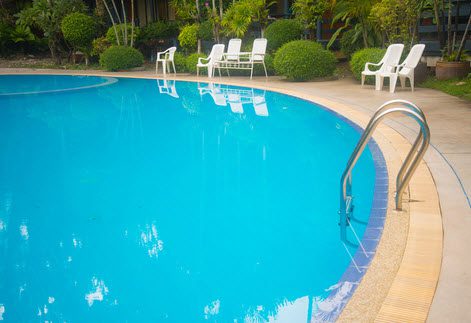In the Sunshine State, swimming pool drownings are the leading cause of unintentional death for children under 5. Moreover, for every victim that dies, five others are rushed to the emergency room with serious injuries. These wounds often involve brain damage and other injuries which have a devastating effect on both the victim and the family.
Personal injury attorneys often deal with swimming pool poisonings as well. If the water has too many chemicals, like chlorine, the swimmers can develop serious or fatal reactions. The same thing holds true if there are not enough cleaning agents in the water and bacteria flourishes.
Requirements for Public Pools in Florida
The rules are very important in premises liability cases, like swimming pool drownings. Violation of a statute usually constitutes negligence as a matter of law under the negligence per se doctrine. The victim/plaintiff must also establish that the violation substantially caused the damages. In some instances, negligence per se is only a presumption of negligence as opposed to conclusive proof.
Even if the violation had nothing to do with the drowning, it establishes a lack of care. For example, assume a victim drowns in a public pool which had dirty water. The legal violation had nothing to do with the drowning. But, it shows the jury that the owner apparently cared little about pool safety.
Many Florida drownings occur in hotel pools, apartment pools, and other semi-public pools. These facilities are considered “public pools” for purposes of Florida law. These statutes require the pool chemicals to be at certain levels and for certain kinds of lifesaving equipment to be easily accessible.
Warning signs, such as “No Lifeguard On Duty” or “No Unattended Children Under 12,” are often an issue in these cases. Contrary to popular myth, such signage does not immunize the property owner. Instead, these signs make it easier to establish the assumption of the risk defense. This doctrine applies if the victim:
- Voluntarily assumed
- A known risk.
These warning signs help the tortfeasor (negligent property owner) establish the second prong of the defense. That leaves the first prong. The victim must be able to see the sign, read it, and understand it for the risk assumption to be truly voluntary.
Rules Regarding Private Pools in Florida
When it comes to backyard pools and other private pools, Florida has one of the strictest laws in the country. The Residential Swimming Pool Safety Act has a number of very specific requirements, including:
- A water alarm,
- Swimming pool safety cover,
- Alarms on the doors and windows with pool access, and
- An approved barrier.
This swimming pool fence must have a self-closing and self-latching gate with a mechanism that’s at least fifty-four inches off the ground, be at least four feet high, have no gaps, and be a safe distance from the water. Furthermore, the mechanism must be on the pool side of the barrier.
Special Issues Regarding Florida Children
Generally, private landowners only have a duty of care if the victim was an invited guest. However, child trespassers do have such protection, under the attractive nuisance rule. This doctrine applies if:
- Owner knows should know about a dangerous condition,
- Property is a place where children might trespass,
- Dangerous condition causes an unreasonable risk of harm to children,
- Children cannot appreciate the risk because of their young age,
- Owner’s burden of eliminating the danger is less than the danger posed to children, and
- Property owner does not use reasonable care.
Attractive nuisance cases are obviously very complex in Florida. To ensure fair compensation, an experienced attorney is almost a must-have.
Work With Aggressive Attorneys
Swimming pools are extremely dangerous, especially for children. For a free consultation with an experienced personal injury lawyer in Brandon, contact Reed & Reed. We have four area offices (St. Petersburg, Lakeland, Tampa, and Clearwater).
Resource:
cdc.gov/homeandrecreationalsafety/water-safety/waterinjuries-factsheet.html




